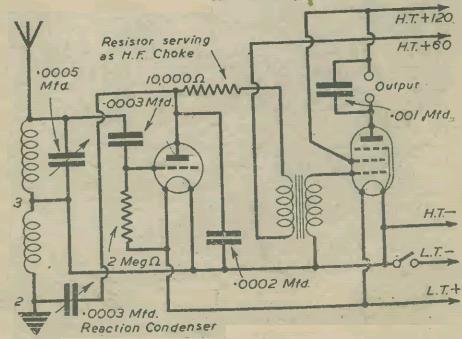Seventy years ago, the British magazine Practical Wireless, August 1946, carried the plans for this two-valve medium wave receiver for the beginner. The circuit was a regenerative receiver, followed by one stage of audio amplification sufficient to drive a speaker.
The set was constructed using “baseboard” components on a cabinet made of plywood. The antenna coil was wound around the cabinet and then covered by leatherette. For strong stations, the built-in antenna was sufficient, but the set had provisions for external antenna and ground.
Apparently, even after the ravages of war, some beginners still had a fear of the soldering iron, and the “baseboard” construction did away with the need for soldered connections, as the author explained:
Another reason is that many amateurs still prefer to make use of baseboard components, rather than chassis components. They can understand such parts better; moreover, there is no soldering to do–a ]ob which the beginner greatly dislikes, for he sometimes makes soldered connection to the wrong points. Some constructors cannot solder successfully at all, and to try to connect four wires to a single pin socket on a chasis valve holder is not only irritating to the amateur, but he also knows in his bones that the connections are far from being satisfactory.
But despite the solderless construction, the author is confident: “As soon as the set is switched on, some programme should be heard immediately. Tune in the station properly and gently apply reaction to increase the volume. If nothing is heard, wait a few minutes. A programme may have just finished. Try tuning in the other station.”
If waiting and tuning didn’t do the trick, the author suggests reversing the leads of the tickler coil, which might have gotten reversed.
Click Here For Today’s Ripley’s Believe It Or Not Cartoon
![]()



Incidentally, from about 1946 to 1950 the same basic circuit was used in nearly all Bush domestic sets from the DAC90A through large table sets to radiograms. Shorn of the mains power supply components it even appeared in a battery portable set!